Is your patio is looking “past it”? Block paving weathered? There is little need to lay an expensive new patio or pathway when you can paint or stain patio slabs, stones, and block paving to update their style and refresh their appearance.
Read on as we go into detail below on painting patio slabs with our recommended specialist products – click here to skip recommended products and to continue reading.
Shop Patio, Slab & Block Paving Products
Quick Links
Click on a link below to jump down the page to that section:
- Patio Slab Cleaners
- Patio Jointing Compounds
- Clear Patio & Block Paving Sealers
- Patio & Block Paving Paints
- Patio Stains
- FAQ’s

Patio slabs, paving stones, and block paving make great outdoor areas for socialising in private gardens, public spaces, services, and places of business, including:
- Public parks
- Cafes, restaurants, pubs
- Plazas and eating areas
- Schools, colleges, universities
But you don’t have to stick with their original colour, or the condition that you inherited them in! At Rawlins Paints, we stock specialist products, paints, and stains, for refreshing, restoring, renovating, and renewing patio areas and block paving, that are easy for consumers to use and cost-effective on the wallet.
These products can be used on concrete, stone, and brick to clear dirt and grime, algae and moss from the surface, and prevent grass and weeds poking up through the joints. They can also provide anti-slip protection for when you’re walking on a patio or paving during wet weather or colder months of the year.
Patio Slab Cleaners
Cleaning your patio before applying further products is of the utmost importance. Dirt and organic growths – like moss and algae – will affect adhesion of paints, stains, sealers, and compounds. Improper cleaning of your patio or block paving will see applied coatings lift off from the surface, requiring the job of restoring your patio to start from scratch again. Expensive and time-consuming!
Rawlins Paints have specialist products to ensure proper preparation and cleaning of your patio, restoring stones and slabs to their former glories, and allowing further application of sealers, paints, and stains.
N-Virol Algae & Lichen Killer is a solvent-free path and patio cleaner that requires no scrubbing or rinsing. Specifically designed to be active against moulds, fungi, algae, and lichen, it is highly soluble in water and contains no acids or bleaches which could damage surfaces on which they are applied. Simply applied using a watering can or low-pressure sprayer.
N-Virol Algae & Lichen Killer works on contact and will kill algae, mould, and other growths typically within 2-4 days, with quick results and long-term protection. The secondary detergent action will help to gently clean the treated surface in the following weeks and months.
Application
- Following dilution application can be either with a low-pressure pneumatic sprayer (course spray) or by using a watering can with a rose attachment
- For small items such as gravestones etc, N-Virol Algae & Lichen Killer solution may be applied by a brush provided the solution is flooded generously into inscriptions and other cavities
- Some species of lichen are resistant to treatment due to their impervious surface
- To optimise the effect of N-Virol Algae & Lichen Killer solution, it is advisable to abrade the face of such growths prior to treatment. (E.g. stiff brush)
- Once existing organic growth has been killed by an initial application (2-7 days) the treated surface will not need to be washed after the application of the product. However, in cases of severe contamination, this dead material should be removed using a stiff brush
Patio Jointing Compounds
Also referred to as “patio grout”, our jointing compounds are swept and brushed into the gaps between paving stones, slabs, and brickwork. They fill the area resulting in a pleasing appearance that will also help prevent growth of grass or weeds.
Sika FastFix All Weather is the ideal solution to perfect pointing on paving, paths, and patios, being fast and easy to use with no mixing required. Highly water permeable, it means no pooling on the patio, provides a natural barrier against weed growth, and does not shrink or crack. Suitable for use on:
- Flagstones
- Cobbles
- Indian sandstone
- Stone setts
- Paving blocks
- Slabs
- Footpaths
- Patios
- Pavements
- Driveways with light vehicular traffic
Application
- Ensure the paving is installed as per watchpoints leaflet (available on the product page) and all joints to be pointed with Sika FastFix All Weather are free from standing water, dirt, debris or weeds. The dimensions of the joints must allow for a full compaction of the material once applied. The minimum joint depth should be at least 20mm and the joint width 5mm.
- Thoroughly wet the entire area where Sika FastFix All Weather is to be applied with water. This includes not only the joints, but also the entire slabs. Allow any standing water to drain before Sika FastFix All Weather is applied.
- Remove the product from the packaging and cut the foil pack. Once punctured or opened the material must be used within one hour. Any unused material can be stored in the bucket, immersed in water, for up to 1 month.
- Use Sika FastFix All Weather in small manageable amounts. Avoid spreading over a large area before application. Ensure material is all loose by raking through. Do not try to break up and use any small set lumps. Do not add any extra sand.
- Using a soft broom, or hand brush for smaller areas, work Sika FastFix All Weather into the joints. Make sure each joint is completely filled. If the freshly laid product is flooded, for instance due to rain, the setting period might be extended.
- Using a suitable pointing trowel make sure the freshly applied Sika FastFix All Weather is thoroughly compacted within the joints. The process should also smoothen/flatten the surface to the desired level. The step of thorough compaction is essential.
- Sika FastFix All Weather will start to set in 6-12 hours above 15°C in dry conditions. Allow up to 5 days for full set in temperatures between 4°C and 15°C. Contact with rain or moisture can temporarily soften the product if wetted before full set.
Clear Patio & Block Paving Sealers
Using clear sealers on your patio or block paving will help maintain the appearance of bricks, slabs, and stones. They help prevent staining and provide protection from the effects of sunlight, water, oil, petrol, and organic growths, as well as against water and air borne pollutants.
Patio and block paving sealers make the surface easier to keep clean and to maintain, improving water and mark resistance. Cromar AlphaChem Block & Paving Sealer is a durable penetrative sealer that is supplied ready for use on masonry and block pavers by brush, roller, or spray.
Application
- All surfaces must be dry and sound and free from any oil, grease, treatment debris and algae. New concrete must be left for 4 to 6 weeks prior to treatment.
- Do not apply if rain is likely within 3 to 4 hours of application.
- Apply to a small test area if in doubt and leave for 24 hours. Apply by brush or roller, work well into the surface taking care not to brush out jointing sand. Apply one or two coats dependent on desired effect.
- Allow 2 to 3 hours between coats.
- Product must be left at least 48 hours to fully cure before the treated area can allow any form of traffic.
- Clean equipment with soapy water.
Patio & Block Paving Paints
Refresh your patio or block paving with a fresh lick of paint. Our wide range of 2,400+ colours and shades mean you can change the colour of block paving and old patio and paving slabs to match or contrast your outdoor furniture such as seating and tables, fences and gates, pergolas, and decking, and much more.
We always recommend the use of anti-slip aggregates, as recommended by each paint manufacturer, if the paint doesn’t already contain one and can encapsulate non-slip additives. This helps improve safety and ensures a sure footing when walking on patios and block paving during wet and wintry weather, particularly if used at a place of business or public service.
If your patio doesn’t have an intact/active DPM (damp-proof membrane) in situ under the patio surface, or has poor drainage, then choosing a paint rather than a patio sealer or stain will likely result in a reduced life expectancy.
Slabs, stones, and bricks absorb moisture that pushes up through the patio to escape, lifting the paint off your patio over time. As most paints will seal the surface this can result in effect such as flaking, peeling, blistering, etc. of the paint if your patio has no DPM underneath.
Coo-Var Anti-Slip Acrylic Floor Paint provides a durable and hard-wearing surface on patio slabs and block paving with an anti-slip finish, independently tested for a PTV rating of 68 in dry conditions and 58 in wet.
Application
How to paint patio slabs and paint over block paving
- All surfaces should be clean, dry, sound, and free from contaminants.
- Concrete – power floated, granolithic and smooth – surfaces should be roughened first to provide a good “key” for the paint. This can be done mechanically by abrading or blasting, or chemically, using Coo-Var Acid Etch. These processes will have the advantage in addition to preparing the surface of also removing dirt and laitance.
- New concrete must be allowed to cure thoroughly which can take up to 3 months. Other surfaces must be prepared and primed with the suitable primer for that substrate.
- Existing painted surfaces – Surfaces should be cleaned, degreased, and sanded to ensure an adequate “key” is produced. Remove all loose and flaking material and treat bare areas as a new surface.
Patio Stains
Staining paving stones and slabs is a quick way to refresh aged and weathered patios. Brush, roller, or spray your chosen colour onto the surface after cleaning; the surface should be usable after just a few hours.
You can easily and quickly renew the look of old paving and slabs with Tikkurila Patio Paving Stain, aligning and deepen the colour of paving stones. Just 1 or 2 coats are required with use of a brush, roller, or knapsack spray to achieve the desired effect, with the surface dry and walkable after a few hours.
Application
- Clean surfaces from dirt, dust, moss, and lichen. Wash surfaces with a pressure washer and use a cleaner according to instructions, if needed. If the paving stones or slabs are relatively new, use turbo nozzle or at least sufficient pressure to ensure absorption capacity of the surface.
- Always make a trial application to find out the most suitable colour, application method, amount of thinner and number of coats for the paving stones to be treated. Thin up to 50 % (2 parts of stain, 1 part of water).
- Apply with a brush, roller or knapsack spray. When using a knapsack spray, finish with a roller or brush, when necessary, to ensure that the product penetrates the substrate’s pores. Apply evenly and without interruption to avoid overlapping. Avoid applying as thick layers as with paint.
- Undyed (concrete grey) paving stones and slabs:
- Apply 1-2 coats depending on the absorbency of the substrate and desired end result. Should you apply several coats, thinning for the first coat is recommended. Two coats are recommended for best results.
- Industrially dyed paving stones and slabs:
- Choose a colour as close to the stones as possible. Apply 1-2 coats depending on the absorbency of the substrate and desired end result. Normally one coat is sufficient.
Notes:
Paving stones and slabs are exposed to continuous weathering, and they may be subject to severe mechanical stress. Therefore, they might also need maintenance treatment almost every year.
Reserve enough stain of the same batch for one uniform surface to avoid possible colour differences.
The product is translucent and therefore unsuitable to change colour of previously industrially dyed paving stone or slab. Stones or slabs of different age might turn out differently in terms of colour. Impurities like motor oil, crystallization of salts or other impurities have an effect on the final colour.
FAQ’s
My patio slabs are sealed…can I paint over them?
The sealer would need to be removed by sanding down before painting, as paints wouldn’t be able to adhere to the surface.
Can you use masonry paint on block paving?
“Can you use masonry paint on patio slabs?“
No – our specialist patio paints are harder-wearing for foot traffic than masonry paints, lasting longer after application.
 Rawlins Paints Blog Industrial Paint Tips, Guidelines & DIY Articles
Rawlins Paints Blog Industrial Paint Tips, Guidelines & DIY Articles
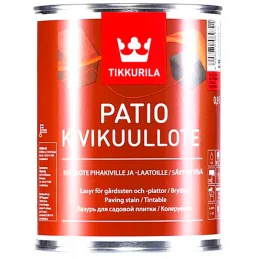
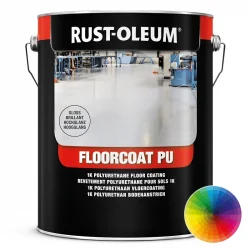
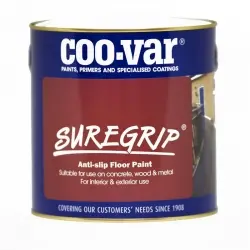

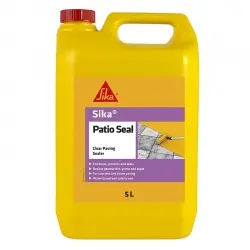
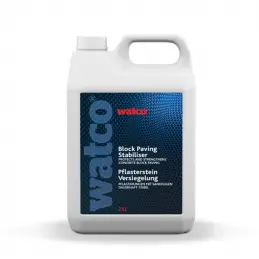
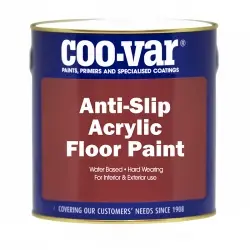
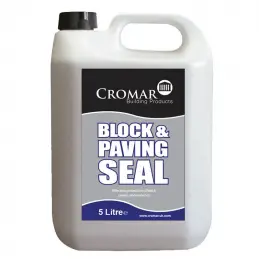
Hi can I paint my Indian stone patio please
Hi Anne,
Thank you very much for your question.
Assuming a clear finish is required, we can offer either of the following products depending on whether a wet look finish or an invisible finish is required:
Wet Look – Hydron Mona-Guard Nhance
Invisible – Hydron Mona-Guard Plus
I hope this helps, and please feel free to get in touch if you have any further questions.
Many thanks
Stuart
Hi do you have any suppliers in Northern Ireland
Hi Joe,
Thank you very much for your question. Unfortunately we don’t ship to Northern Ireland at present, however we are working towards adding NI to our shipping options in the near future.
I hope this helps and please feel free to get in touch if you have any further questions.
Many thanks
Stuart
I have had my mono block driveway extended and for obvious reasons it is two different shades of red.
could I use this paint and have my driveway all the same colour?
Regards
Pat
Hi Patrick,
Thank you very much for taking the time to read our blog and for your question.
Patios, block paving and concrete externally can be difficult to paint with success.
Internally a damp proof membrane is laid controlling any rising/evaporating moisture but externally this is usually not used meaning that evaporating ground water can push coatings off, this being said sometimes in some cases it works for a few years.
Secondly, these types of substrate are designed to drain, if the surface is sealed with a film build coating then the drainage won’t happen and a smooth paint would be slippery, meaning you may need to go down the anti-slip route which isn’t always desired.
A product we could recommend for this application would be Tikkurila Patio Paving Stain. Please bear in mind this would likely need yearly re-application and can’t be used on new garden stones or non-absorbing substrates such as wash concrete or natural stone.
Another other option as per the blog would be Coo-Var Anti-Slip Acrylic Floor Paint. However this wouldn’t be suitable for vehicle traffic.
I hope this helps and please feel free to get in touch if you have any further questions.
Many thanks
Stuart